W3C Strategic Highlights
April 2017
This report was prepared for the April 2017 W3C Advisory Committee Meeting. See the accompanying W3C Fact Sheet — April 2017. For the previous edition, see the September 2016 W3C highlights. For future editions of this report, please consult the latest version.
A Chinese translation is available.
Introduction
Our last public report focused on Web Security and putting the future of the Web on the track of the future of Industry. We described how the Web is changing and encompassing a growing, innovative and agile community, and how W3C is responding with great changes. We introduced our internal functional reorganization to better interact with a complex ecosystem of technologies, stakeholders, and industries. Leading the Web to its Full Potential requires well-researched strategy development, rigorous project management, and careful architectural coordination, which W3C has transitioned to smoothly and transparently in the past six months.
Since then, notable highlights include:
- The IDPF has completed its combination with W3C.
- We held a very successful and promising W3C Workshop on “Web & Virtual Reality” which highlighted the need for ever more bandwidth to bring the assets needed to make VR experiences from the Web platform.
- We began standards work on the Web of Things to reduce IoT fragmentation, complement existing platforms, enable trillions of dollars of new services with end to end communication across different networks and technologies –including for telecommunication operators– to take advantage of the Web platform.
- And just this month, our Director Sir Tim Berners-Lee was named recipient of the Turing Award, in recognition for inventing the World Wide Web, the first web browser, and the fundamental protocols and algorithms allowing the Web to scale.
The Web has grown to be the technical infrastructure of Society –the universal connectivity platform. It continues to change business and society, and just as business and society evolve, new needs arise, new opportunities for more captivating experiences need addressing. The Web needs scaling to the opportunity. The Web needs an organization focused on addressing opportunities.
From everyday needs of Web users, to Industry impact, W3C's vision has four areas of excellence: Strengthening the core of the Web, exciting with the next level experiences, extending the reach of the Web, and meeting Industry needs.
Strengthening the core of the Web
How are we securing the Web?
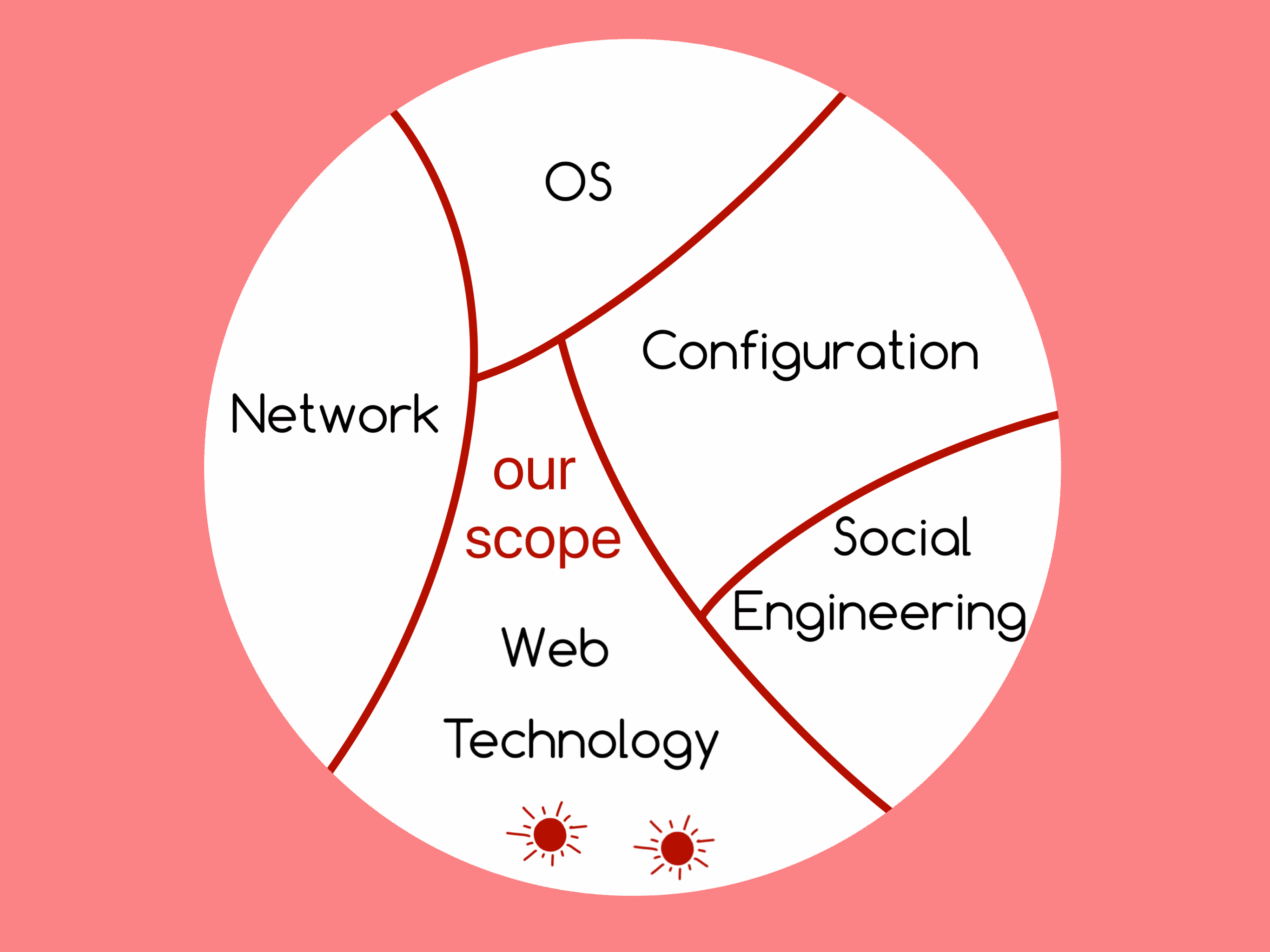
All Standards and Drafts: Security for Web Applications
The Web Cryptography API reached the status of Recommendation, providing a widely implemented API to cryptographic functions by which Web application developers can support secure operations. The Web Authentication API –already implemented in several browsers– is nearing Candidate Recommendation, thus allowing access to strong cryptographic credentials to replace or augment the security of username/password-based authentication.
A fundamental channel of trust on the Web is between the end-user and the Web application. The recent advancement as Recommendations of Subresource Integrity and Content Security Policy 2 provide tools to improve the security available to Web application developers and users. The very active W3C Web Application Security Working Group (recently re-chartered) brought to Candidate Recommendation Mixed Content, Upgrade Insecure Requests, and Referrer Policy; and published a flurry of Working Drafts – Credential Management, Permissions API, Clear site data, CSP-Embedded Security.
W3C Members rechartered the Web Security Interest Group with a trio of goals:
- Incubation: Discussing ideas for new Recommendation-track work; dispatching promising ideas to a Community Group or Task Force; proposing drafts to W3C for Working Group chartering.
- Horizontal Reviews: Assessing W3C drafts for security considerations and/or publishing questionnaires or other guidance to enable self-review by working groups.
- Web Security Incident Review: Considering reported security incidents as input, e.g., to correct patterns of error, threat modeling, and new specification development.
Web Performance
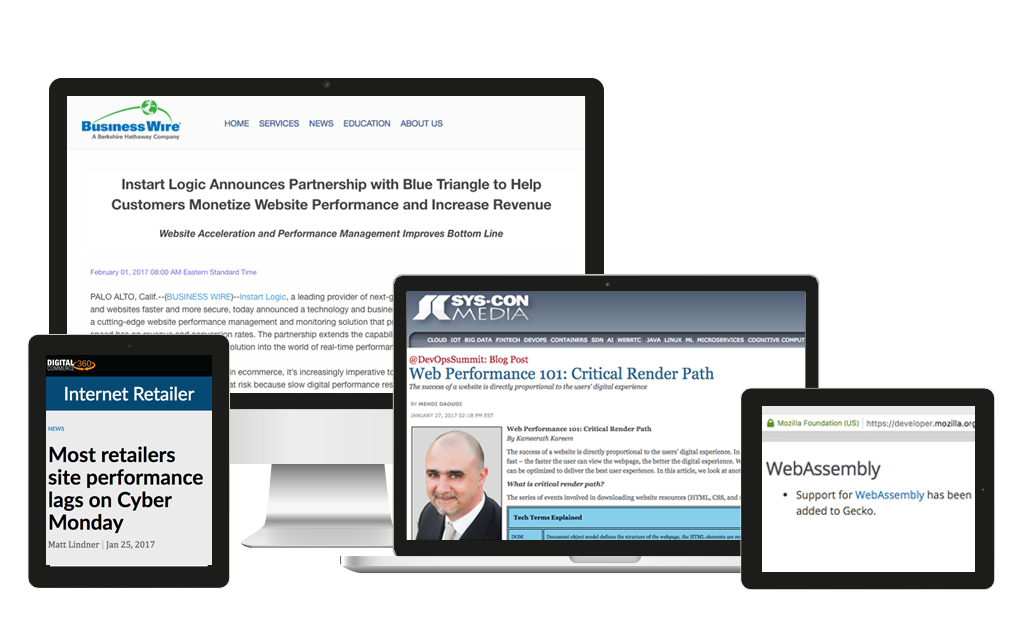
All Documents: Web Performance Working Group
"The success of a Website is directly proportional to the user's digital experience." (Jan. 2017)
Due to soaring interest and participation from heavy consumers of real-world performance information, the W3C Web Performance Working Group is highly active. With a mission to provide methods to observe and improve aspects of application performance of user agent features and APIs, the group has been focusing on:
- Collecting real-world performance information from the user agent while loading resources.
- Extending HTML to separate resource loading from resource execution, allowing more control over Web application startup time.
- Taking advantage of user agent idle time for non-priority background tasks.
The Group pushed several Candidate Recommendations related to real-world performance information in the past 4 months and expects to release 6 new W3C Recommendations by the 2017Q3.
HTML

All Documents: Web Platform Working Group
The Web Platform Working Group released HTML 5.1 as a W3C Recommendation in November 2016. This revision of HTML defines new and existing elements and attributes to help Web application authors, new elements on research into prevailing authoring practices, removes material that was never or is no longer implemented as a core part of the Web, and gives special attention to defining clear conformance criteria for user agents in an effort to improve interoperability.
HTML 5.2 was first published in August 2016 and was updated twice since then. The W3C Recommendation for HTML 5.2 is scheduled for late 2017.
The working group recently restarted its effort on the DOM specification as well. DOM 4.1 was published as a First Public Working Draft and is on track for Recommendation in 2017.
Progress on Input Events is illustrated as a success story of work with developers as well as browsers. Level 1 includes what is interoperable and ship soon, and could reach W3C Recommendation within a year; while Level 2 is about developing rich text editing on the Web.
WebIDL has been ten years in the making and there are significant dependencies on this work within other groups. While WebIDL 1 is a W3C Recommendation, WebIDL 2 poses a number of challenges.
The work on Web Components and on Service Workers, considered initial-phase standards with timelines keyed to market deployment, is still progressing at its own pace and is showing signs of adoption –the latter is implemented in Blink, Gecko and EdgeHTML.
There is a healthy engagement and interest in the rest of the group's efforts and other progress includes the advancement of Pointer Lock 2.0 as a First Public Working Draft, and the recent Advisory Committee review of IndexedDB 2.0 which may reach Candidate Recommendation by late April.
CSS
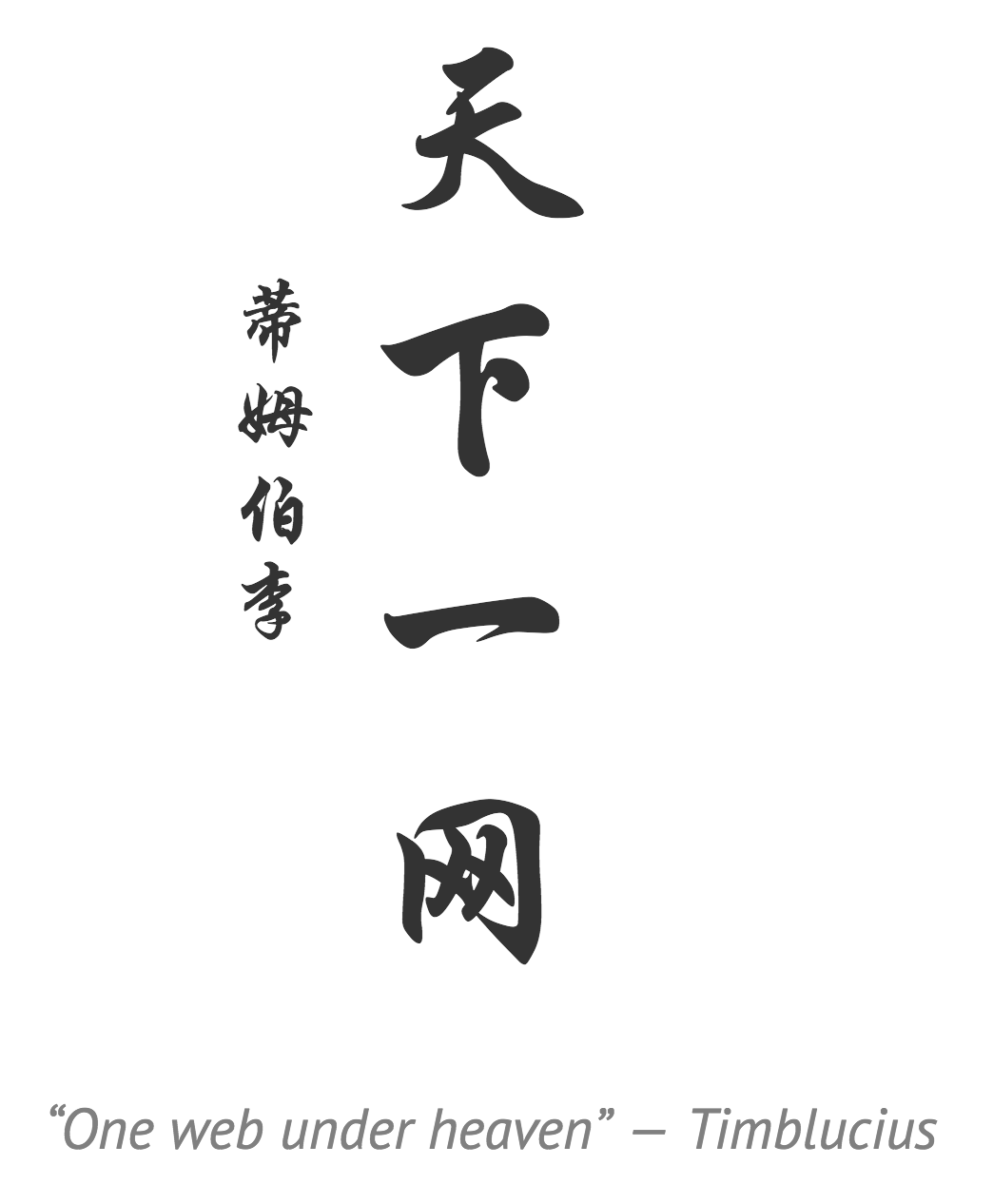
All Documents: Cascading Style Sheets (CSS) Working Group
CSS continues to make steady progress. In its current charter, the group has completed 7 Recommendations and has 24 specifications in Candidate Recommendation.
One particular highlight is layout where the group aims for more power, fewer hacks, cleaner markup:
- CSS Grid Layout (Candidate Recommendation)
- Display: content (soon a Candidate Recommendation)
- CSS for Publishing
What can CSS do for Publishing? A lot, across many unequally implemented specifications. Help needed with specifications, tests, detailed use-cases and implementations.
The demands for extending CSS come roughly from three different
areas: (1) traditional Web pages, (2) Web applications and (3)
publishing, both paper and electronic. These sometimes conflict in
their priorities. E.g., Web applications require fast rendering and
fast reaction to user actions, but the underlying mark-up is not very
complex, given that the semantics of an app
reside in its
code, not in the structure of its GUI.
Books and e-books, on the other hand, are highly structured, require
high-quality typography for readability, but are less critical in the
rendering time.
In none of the three areas there is yet a technology that works better or is more popular than CSS. In practice, that means CSS has to be enhanced carefully in small steps and sometimes has to wait for technology (algorithms and hardware) to improve. An example is the CSS Grid module (currently a Candidate Recommendation). It is already very popular with designers, but, in its level 1, it necessarily has some restrictions. It allows to align various parts of a document or GUI to each other both horizontally and vertically (like in a table, but without requiring a table), but it only works on flat structures (no deeply nested document trees) and has very little smarts (no automatic optimization of sizes). These will come, but in a level 2 or 3.
New selectors are another means to help style complex
documents. But here also some of the enhancements proposed for Selectors
level 4 are under discussion, because it is not clear yet
if there are algorithms to make them fast enough. The old
pseudo-elements such as ::first-line and ::before,
but also the more recently proposed content value for
the display property are other examples of small steps
to deal with document structures that do not map easily to a desired
visual layout, while still keeping the necessary computing time
small.
An example of a new feature for high-quality typography is the Writing Modes module (currently a Candidate Recommendation). It allows vertical writing, which is common in Japanese books and magazines. It has been under development for a very long time (more than 16 years, if we count the earliest attempts as part of other CSS modules), because it is actually quite complex. Part of the reason is that vertical text rarely occurs in isolation: A typical Japanese magazine mixes horizontal and vertical text on one page. But this flexibility means that designers can now also put English text vertically with CSS.
The CSS Working Group has benefited in the past from the work of the Internationalization task force on Japanese layout and is still benefiting from the work of similar, more recent task forces for other typographic traditions. The Digital Publishing Interest Group (soon to be strengthened by the Publishing Working Group) also provides essential expertise.
It is necessary that CSS becomes (much) better at formatting text that has page breaks and page numbers, but this, like vertical writing, is not easy in a context that also requires rendering speed. Nevertheless, some existing implementations of proposed CSS extensions show that a lot is possible. They also show that the demand is high, because publishers have already started using them. (Which is risky, of course, but also a useful source of information for the CSS WG.)
As said above, some parts of CSS take many years to mature. Indeed, CSS as a whole has been growing (without losing backwards compatibility!) for more than 20 years. And we cannot end this section without mentioning an anniversary: Since December 17, CSS is officially 20 years old!
Exciting with the next level of experience
Virtual reality, Augmented reality

"AR Headsets (Magic Leap, Hololens, etc.) could replace phones, TVs and screens." (Feb. 2017)
The excitement emerging from the October 2016 W3C Workshop on Web & Virtual Reality highlighted the need for ever more bandwidth to bring the assets needed to make VR experiences available from the Web platform.
WebVR, a JS API for immersive 3D & VR experiences in your browser, is already experimentally implemented in 7 browsers.
Tracked in the W3C Strategy Funnel, the Team has been working on a draft Working Group charter (Feb. 2017) and recently shared it in an advance notice (Mar. 2017).
Real-Time Communications
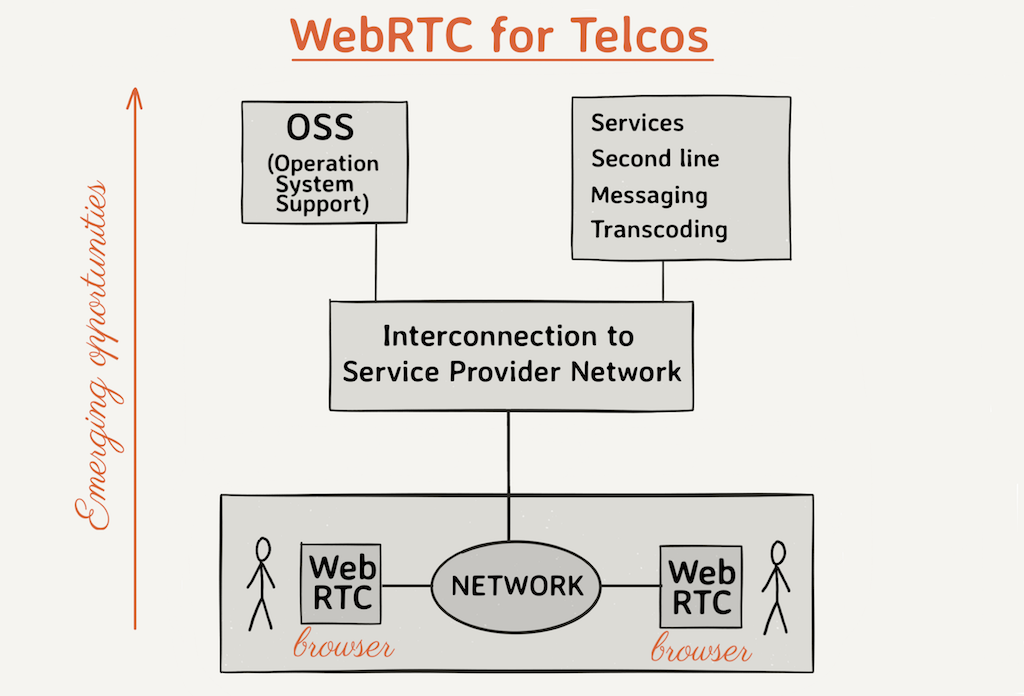
All Standards and Drafts: Web Real Time Communication
Work on the WebRTC API progresses and could reach Candidate Recommendation in 2017Q1.
A number of telecommunications operators have already deployed either in-house WebRTC-based solutions (e.g. appear.in by Telenor, Libon by Orange, TokBox, TuGo, Tuenti by Telefónica), or relying on external providers (such as Mavenir –formerly known as Xura) to deploy WebRTC-based services (e.g. network and device-independent phone endpoint).
Emerging opportunities include promising interaction with WebVR, presence and deeper integration (Service Workers), broadcasting, P2P, eLearning and tele-expertise, gaming.
Meeting Industry needs
Digital Publishing
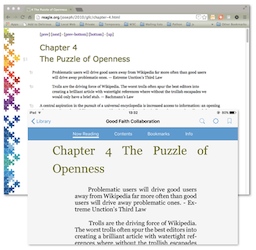
All Standards and Drafts: Digital Publishing
A new road-map for the future of Publishing is underway as W3C and IDPF officially combined earlier this year. Together, we are committed to creating an empowering environment where publishing industry experts and web technology experts exchange ideas and explore what's next to build the standards and best practices that meet the requirements of these communities so that EPUB and the Open Web Platform continue to grow and evolve.
Digital publishing is increasingly impacted by the Web; publishers need to understand how the technology of the Web is evolving. By the same token, the Web can benefit from the centuries of expertise in the publishing industry on typography and layout, improving the core Web technologies not only for electronic publications but for all Web content. Publishing will reconcile the Web's original concept of a gigantic library of... publications.
Currently W3C has one group dedicated to understanding and documenting the particular needs of the publishing community: the Digital Publishing Interest Group, which aims at continuing the work on and around Packaged Web Publications (PWP), CSS related issues, as well as Accessibility. Reinforcing the ties with the publishing community at large, in particular with implementers, tool developers, but also with the scholarly publishing community, remains high on the agenda, as well as outreach activities around the relationships between publishing and the development of Web Technologies.
Several iterations of "Web Publications Use Cases and Requirements" (UCR) were published and “Web Publications for the Open Web Platform” was significantly updated. These documents will be used as input to a planned Digital Publishing Working Group, whose charter should be presented for approval to the W3C Advisory Committee sometimes in the first half of 2017.
Web Payments
All Standards and Drafts: Web Payments
E-commerce is growing as a proportion of all commerce. According to Forrester, the web in 2018 will account for 11% of total retail sales, up from 8% in 2013. However, a number of challenges are limiting the potential of E-commerce, such as fraud losses, user expectations in particular with mobile device usage, technology (Biometrics, Web of Things, Automotive advances, and NFC adoption), regulation.
The year 2017 should be a big one for Web payments given the progress of the W3C Web Payments Working Group in the past six months in streamlining check-out at the level of the payment flow (Payment Request API in Candidate Recommendation and Payment Handler API in First Public Working Draft in 2017Q2) and of the payment method (Tokenized payments, credit transfers).
The W3C Web Payments Interest Group continues to explore and incubate work: digital offers, receipts, automotive use cases, improved payment security, understanding of rules and regulation.
Entertainment

All Standards and Drafts: Web and TV
The Entertainment vertical tracks media-related topics and features that create immersive experiences for end users. HTML5 brought audio and video to the Web. Standardization activities since then have aimed at turning the Web into a professional platform fully suitable for the delivery of media content and associated materials, enabling missing features to bring content to the Web such as adaptive streaming – the Media Source Extensions (MSE) specification was published as a W3C Recommendation in November 2016 – and content protection – technical work on the Encrypted Media Extensions (EME) specification is now complete. All major browser vendors support these specifications.
Yet the Entertainment landscape is dynamic and the potential is huge. Many opportunities are at the intersection of Web technology and Entertainment; from video on demand portals, to individualized advertisement, social network integration and integrated shopping.
W3C Members are already making advances in the next salvo of achievements for Entertainment, including:
- HDR / Wide-gamut on the Web
- Cloud Browsers
- WebVR API to expose head-mounted displays to Web applications
- GPU API for the Web to expose graphic cards' 3D graphics and computation capabilities.
Extending the reach of the Web
Web of Things
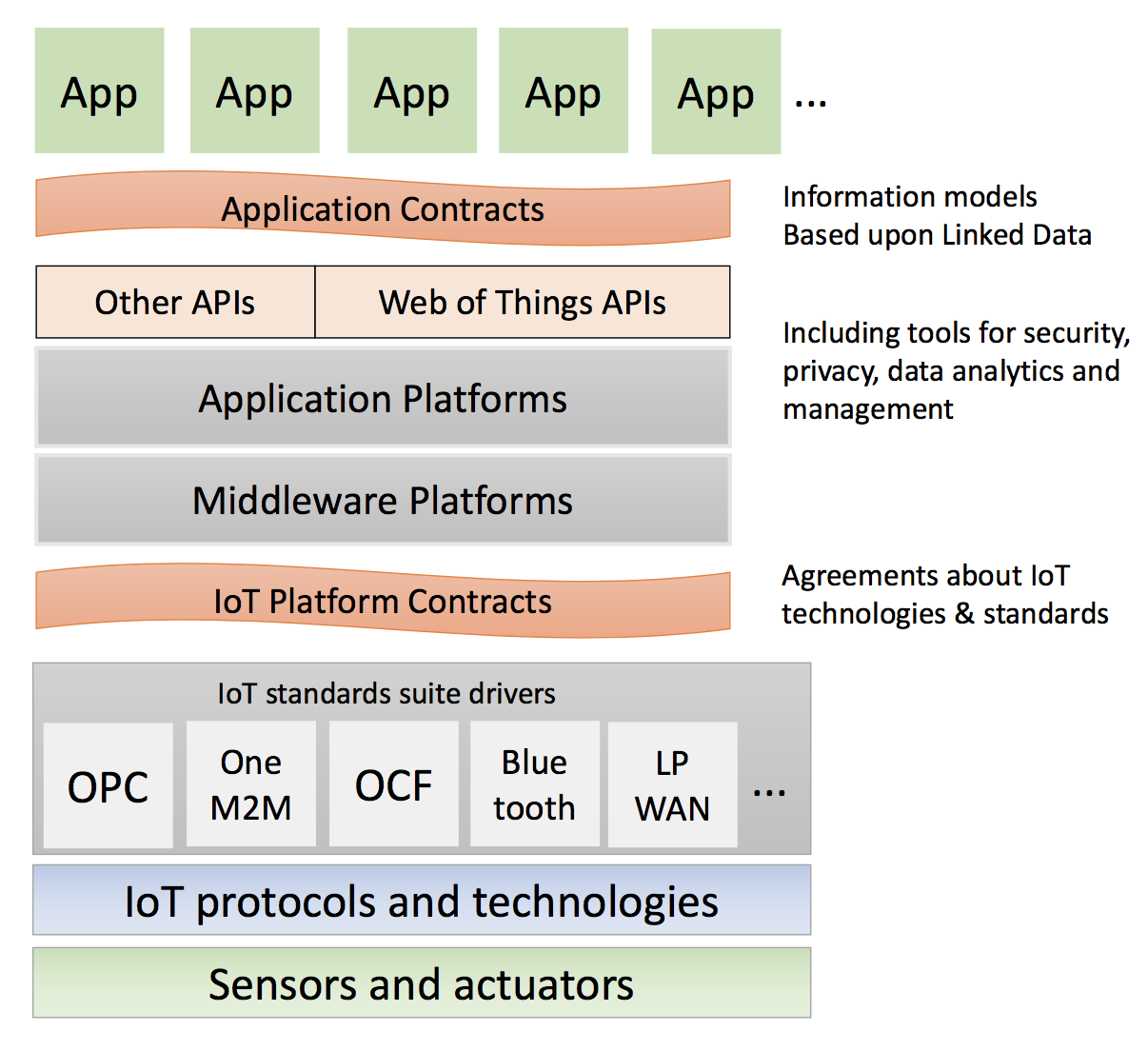
WoT Working Group main Github repository
Although the Internet of Things has supported the realization of many innovative solutions by blending physical and digital realms, its potential is currently held back by fragmentation into incompatible platforms, protocols, and data formats, which leads to problems concerning standardization and interoperability, discoverability and security of resources. The Web is fueling transition from a costly monolithic software to open markets of applications.
A fairly recent study from the McKinsey Global Institute shows that there is a huge potential value increase (depending on the application sector, it could go up to 40%) when increasing the interoperability of IoT systems (McKinsey Global Institute (MGI). 2015. THE INTERNET OF THINGS: MAPPING THE VALUE BEYOND THE HYPE. June 2015). Furthermore, the study shows that in some scenarios only around 1% of the IoT-generated data are analyzed, and only for real-time control or anomaly detection, but not for failure prediction, optimization or other maintenance purposes.
The Web of Thing complements existing platforms and can be added to them. Today, companies are investing significant resources into industry specific alliances, but very little into interoperability at the application layer. Modest investments in open standards and open platforms accrue dividends. Developing the core standards is key to reaping the benefit from a rich exchange of ideas, and acceleration of opportunities, thus enabling exponential growth.
W3C began standards work on the Web of Things to reduce IoT fragmentation, complement existing platforms, enable trillions of dollars of new services with end to end communication across different networks and technologies –including for telecommunication operators– to take advantage of the Web platform. The W3C Web of Thing Interest Group and Working Group are focusing on standards for the interface between applications and application platforms, as well as the standards needed to enable open marketplaces on the scale of the Web.
Automotive
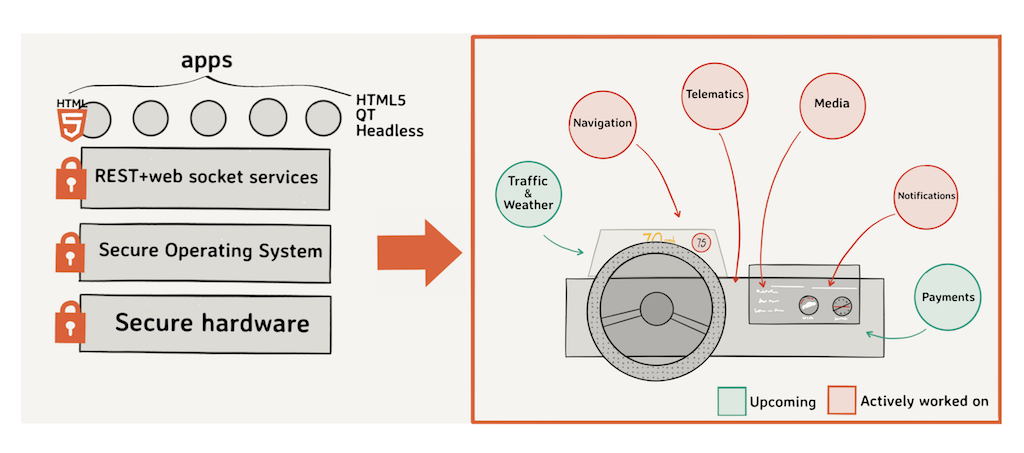
All Standards and Drafts: Automotive
2015 was the year of Vehicle Information: exposing vehicle information on the Web via a WebIDL based Javascript API and vehicle data specification.
2017 is the year of Vehicle Signals: exposing vehicle signals on the Web via a service specification catering to any app (QT, HTML5, headless) running on the vehicle.
The Automotive WebPlatform Business Group, which acts as an incubator for prospective standards work, explores areas in a number of task forces:
- Privacy & Security
- Media-tuning
- Location-based services
- Next Generation vehicle information services
- Payments?
Web of Data

All Standards and Drafts: Data on the Web
The Data on the Web Best Practices became a Recommendation at the end of January to encourage the intelligent sharing and data, whether openly or not. A more specialized set of best practices for spatial data is close to completion, designed to bridge the gap between the GIS world and the Web. Best Practice no. 1: Use globally unique persistent HTTP URIs for spatial things. It’s a simple statement but it’s the difference between benefiting from the full potential of the network effect that only the Web can bring, and using the Web as a glorified USB stick. The spatial data on the Web WG, in which W3C is collaborating directly with the OGC, is also close to completing work on the OWL Time Ontology, the Semantic Sensor Network Ontology and several Notes describing how to represent a Coverage, such as Earth Observation data, on the Web. It is hoped that the collaboration with OGC will continue in a new IG later this year.
Licensing, rights and obligations are critical to the sharing of any resources and the relevant standard, ODRL, is expected to become a Candidate Recommendation in May 2017. That level of maturity has already been met by the Shapes Constraint Language, SHACL, which is also relevant to the Dataset Exchange WG that came out of last year’s Smart Descriptions & Smarter Vocabularies workshop (SDSVoc). The new DXWG will formalize the concept of an application profile and explore content negotiation by those profiles (irrespective of whether the data is encoded in JSON, RDF, XML etc.). It will also update and expand the widely-used Data Catalog Vocabulary, DCAT.
The latter is an example of a vocabulary for which W3C needs to find a better balance than is currently the case between the stability of a Rec and the user community demand for greater responsiveness to requests for change. This is an area for imminent future improvement. Looking further ahead we hope to organize a workshop in 2018 around the general idea of annotating RDF statements for temporal validity and of the probability that the statement is true. This ties in directly with big data analytics, machine learning and AI. As with much of W3C’s work around data, such a workshop is largely dependent on securing external funding. Current projects, Big Data Europe and VRE4EIC, are supporting the work on ODRL and the Dataset Exchange WG.
Web for All
Internationalization (i18n)

All Standards and Drafts: Internationalization
Fewer than one third of current Web users speak English as their native language and that proportion will continue to decrease as the Web reaches more and more communities of limited English proficiency. If the Web is to live up to the "World Wide" portion of its name, it must support the needs of world-wide users at a basic level as they engage with content in the various languages. The W3C Internationalization activities pursue this goal in various ways, including coordination with other organizations, creation of educational materials, coordination on the work of other W3C groups, gathering user requirements, and technical work itself.
Significant new developments include the following:
- Specification developers and implementers need access to information about how non-Latin scripts work in order to implement CSS and other technologies. Finding that information has been difficult in the past. To respond to that need, the Internationalization Working Group has recently developed the International text layout and typography index. It helps locate typography-related requirements, and tracks open questions and issues. In future, CSS specifications will point implementers to this document for additional information. There is also now a companion Type samples repository, where people can submit and find examples of typographic features.
- There is currently no standard or clear way to communicate information about the base direction of text when passing strings around. This can cause problems later, when applications need to display natural language strings in languages such as Arabic, Hebrew, Persian, Divehi, etc. The Internationalization Working Group has begun to study how to represent bidirectional text metadata in JSON and other string-based environments.
- A new version of the Internationalization Checker was produced, bringing the checker up to date, and adding many new checks, especially in the area of right-to-left script support.
Other areas of focus include:
- Support of the Encoding specification: updates to the Candidate Recommendation snapshot taking into account recent changes to the editor's version of the specification further to feedback from the implementation work and test results.
- Documenting requirements for support of non-Latin scripts. These include Arabic, Ethiopic (FPWD for Ethiopic Layout Requirements), Indic, Chinese, Tibetan and Mongolian. See a list of current activity. We are also in the process of setting up a group to work on Hebrew layout requirements. These requirements gathering activities are widening the visibility of the W3C in areas we have not penetrated deeply before, and helping the Consortium provide a more representative Web for All.
- The Internationalization Working Group has partnered with other working groups such as HTML, CSS, Web Annotations, Social Web, Spatial Data, SVG, Web Payments, WAI groups, Timed Text, and Web Applications (see ongoing discussions in the issue tracker and the review radar for upcoming reviews), resulting in the Internationalization Best Practices for Spec Developers (and its derived checklist Internationalization Techniques: Developing specifications). The group aims to produce a self-review checklist for working groups to use from an early stage in the development of their specs.
Web accessibility
All Standards and Drafts: Accessibility; see also WAI Resources.
A billion people in the world have disabilities—one out of every seven—according to the World Report on Disabilities. Helping build W3C’s accessibility-supporting specifications, guidelines, evaluation and educational materials improves access to the Web for people with disabilities, and increases accessible technology options for all to implement. Accessibility activities support W3C’s Web for All mission. The Web Accessibility Initiative (WAI) continues to help ensure a cohesive package of coordinated accessibility activities, now distributed across the functional management areas of W3C.
Accessibility horizontal reviews and research questions
Ensuring the accessibility of all W3C specifications, and following up with W3C groups as needed on accessibility barriers is undertaken within the Accessible Platform Architectures (APA) Working Group.
An accessibility checklist for specification developers to pre-check their specifications for potential accessibility issues early in the development process, with more detailed guidance is available.
APA's Research Questions Task Force (RQTF) is investigating several topics identified in the course of APA accessibility reviews, including accessible authentication strategies, and accessibility use cases for Web of Things.
A good time to get involved in new accessibility guidelines work
The Accessibility Guidelines Working Group (AGWG), rechartered in January 2017, primarily focuses on development of WCAG 2.1, an update to WCAG 2.0. An important criteria for WCAG 2.1 is to maintain compatibility with WCAG 2.0. New coverage in WCAG 2.1 will expand coverage for low vision users; users with cognitive and learning disabilities; and mobile users with accessibility requirements. There has been a lot of demand for improved approaches to accessibility conformance assessment. New work incubated in a community group was brought in as the Accessibility Conformance Testing Task Force of the AG WG. A “Silver” Task Force was created to explore stakeholder requirements for post-WCAG 2.1 work on accessibility guidelines.
Uptake and implementation of guidelines
The Education and Outreach Working Group (EOWG) has been updating resources that explain the why, what and how of accessibility guidelines, to address needs of the diverse audiences for WCAG 2.0, which includes non-technical as well as technical audiences.
A more comprehensive library of explanatory resources for accessibility specifications and guidelines is available.
Notable recent updates include:
- Easy Checks – A First Review of Accessibility
- Web Accessibility First Aid – Approaches for Interim Repairs
- Developing Organizational Policies on Web Accessibility
- Planning and Managing Web Accessibility
- and the video series "Perspectives on Web Accessibility"
W3C in the World
Training
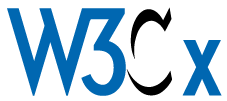
- Since the W3Cx MOOC training program started 2 years ago, nearly 400K people enrolled in W3Cx HTML5 courses.
- W3Cx is expanding its program offerings with a JavaScript Introduction course, developed in partnership with University Côte d'Azur.
- Partnership:
- HTML5 Intro has been developed with Intel.
- CSS Intro has been developped with Microsoft.
- Topics under exploration:
- Web Privacy
- EPUB
- accessibility
Liaisons
W3C is involved in liaisons and coordination with numerous organizations and SDOs to:
- coordinate our respective agenda;
- avoid duplication of work;
- mitigate different milestones timing, different confidentiality rules, different IPR, different vision of the Web;
- make sure standards are inter-operable;
- ensure the global set of Web and Internet standards form a compatible stack of technologies, at the technical and policy level (patent regime, fragmentation, use in policy making);
- promote Standards adoption equally by the industry, the public sector, and the public at large.
Regular activities
- At the government liaison level, we ensure our standards work is officially recognized so that products based on them (often done by our members) are part of procurement orders or other official public policies.
- We have ARO/PAS status with ISO; WAI WCAG 2 became ISO/IEC 40500; MathML became ISO/IEC 40314 (for Pi).
- W3C is a co-signatory of OpenStand. IEEE, IETF and W3C, pilars of Internet/Web standards, joined to create a new paradigm for standards.
- In Internet Governance, W3C participates in ICANN, GIPO, IGF, the I*, etc.
- See this member-only archives for various official liaison statements sent or received by the staff.
Ongoing/Upcoming work
- We are currently working with ISO/JTC 1 on potential changes to the copyright regime of our PAS submissions.
- We are participating in the EU MSP and Rolling Plan on Standardization.
- We are currently exploring coordination with ESOs on development of updated guidance on mobile accessibility.
Conclusion
Last year's reorganization has helped focus the organization for the future. As you can see from all of the new areas listed above and from the Strategy funnel there are many new areas for web standards development. Project management is focusing on reducing the time for standardization.